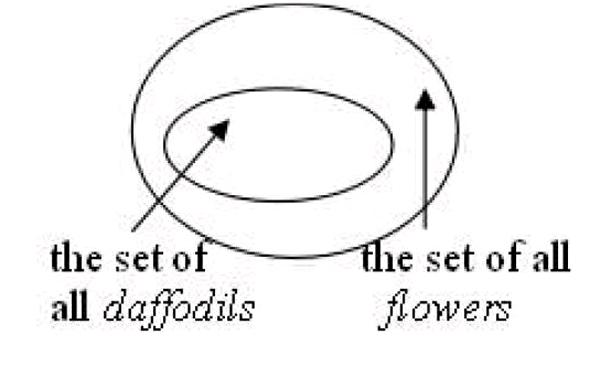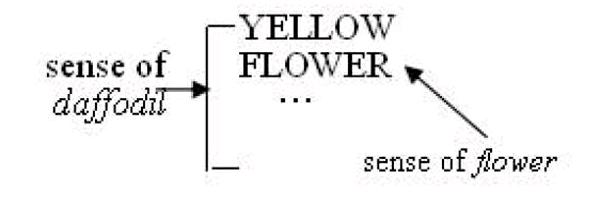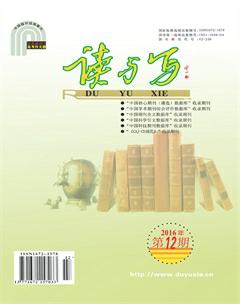The Intension and Extension of Hyponymy
Abstract:Although hyponymy is a common sense-relation, its definition is often taken for granted. Hence repeated confusion or ambiguity, even among linguists. The present study strives to tell the intension and extension of hyponymy, which are the core of the casual assumption involved in the definition of hyponymy, as maximally apart so as to restore the linguistic nature of hyponymy analysis.
Key words:hyponymy; intension; extension
中图分类号:H315.9 文献标识码:A 文章编号:1672-1578(2016)12-0001-02
Hyponymy is a sense-relation of inclusion. The concept of “inclusion” involved here is the idea that if any object is a fir, then it is necessarily tree, so the meaning of tree is “included” in the meaning of fir. In other words, a hyponym includes the meaning of a more general word. The more general term is called the superordinate or hypernym. e.g.: plant is the superordinate of flower and crop; flower is the superordinate of rose and peony.
However, a cursory survey of semantics literature, including even some classics written by big-name semanticians, makes one acutely aware of the necessity of revealing the deceptively simple nature of the terms “inclusion”and“include”to combat the long-standing confusion. The emphasis here is on the effort to point out the culprit of the casual assumptions involved because, as Chomsky puts it, “there is good reason to examine more closely doctrines that have been assumed too casually, and if they do not withstand analysis, to ask why they seem so compelling”(Chomsky 2000:105).
1 Redefine the Definition of Hyponymy
Lyons prefers“hyponymy” to“inclusion”or “subordination”(Lyons 1968:453;1977:291-2) because the latter two terms are also used in other senses in linguistics and logic. “Hyponymy” is frequently discussed by logicians in terms of class-inclusion, and, up to a point, this is satisfactory enough. For example, if X is the class of flowers and Y is the class of daffodils, then it is obvious the case that X properly includes Y. In this case, we are considering the extension of lexemes, and the superordinate is more inclusive as shown in the diagram of the extension of flower and daffodil.
But paradoxically, hyponymy is defined in terms of the inclusion of the sense of one item in the sense of another (Hurford&Heasley 1983:106). For example, we say that the sense of flower is included in the sense of daffodil. This inclusion can be shown roughly by a diagram listing the sense-components of daffodil. Then the relationship appears the other way around.
Hurford (ibid: 106) points out that hyponymy is a sense relation. Another term for sense, preferred by logicians, is intension, a term deliberately chosen for its implicit contrast with extension. Therefore, at least in linguistics, the discussion of hyponymy should be based on intension rather than extension. This view is echoed, and rightly so, by Saeed, who, in Semantics(2000), defines hyponymy as a relation of inclusion.“A Hyponym includes the meaning of a more general word” (Saeed 2000: 68). Two examples, given by him, are:
dog and cat are hyponyms of animal
sister and mother are hyponyms of woman
2 Scrutiny of Some “Loose” Definitions
It is a sad fact that some linguists, both home and abroad, have not shown much vigor in their definition of hyponymy. F. R. Palmer, in his Semantics, defines hyponymy as: “HYPONYMY involves us in the notion of INCLUSION in the sense that tulip and rose are included in flower, and lion and elephant in mammal(or perhaps animal…)(capitals in the original). Similarly, scarlet is included in red. Inclusion is thus a matter of class membership”(Palmer 1981: 85).
Another definition of hyponymy is from Crystals A Dictionary of Linguistics and Phonetics, which states that “hyponymy is the relationship which obtains between specific and general lexical items, such that the former is included in the latter(i.e. is a hyponym of the latter). For example, a cat is a hyponym of animal, flute of instrument, chair of furniture, and so on”(1985: 150).
A Practical English Lexicology(1984) states that the meanings of some words are subordinate to that of other words. “For example, baby, child, man, woman are included in human being; rose, tulip, peach blossom, carnation are included into flower. These words are hyponyms, and human being and flower are superordinate”(Wang Rongbei & Li Dong 1984: 93). In Studies in English Lexicology, the author uses such an example: “if the meaning of poets is included in that of writers, then their relationship is hyponymy” (Wang Rongbei 2000:64).
3 Conclusion
Although logic and linguistics overlap in the subjects they deal with, it is advisable to keep them apart, whenever necessary, to minimize the possible confusion. Linguistic semantics mainly discusses semantic phenomena from the perspective of intension, while logic analyzes them in extension. The aforementioned analysis shows that the discussion of hyponymy in linguistics should be based on intension rather than extension. As said earlier, to lessen the annoyance of criticism, it is necessary to add that this paper is done out of the spirit of what Thomas Kuhn has stressed, viz., the idea that the most significant lesson to scientific progress is the importance of dragging “hidden assumptions” into the open (Kuhn1962).
Bibliography:
[1] Chomsky, Noam. New Horizons in the Study of Language and Mind [M]. Cambridge: CUP,2000.
[2] Crystal, David. A Dictionary of Linguistics and Phonetics [M]. (2nd ed.) Basil Blackwell.1985.
[3] Hurford, James R. & Heasley, B. Semantics: A Course Book [M]. London: CUP,1983.
[4] Kuhn, Thomas S. The Structure of Scientific Revolutions [M]. Chicago: Univ. of Chicago Press.1962.
[5] Lyons, John. Introduction to Theoretic Linguistics[M]. Cambridge: CUP. 1968.
[6] Lyons, John. Semantics[M].Vol. 1. Cambridge:CUP.1977.
[7] Palmer, F.R. Semantics[M](2nd ed.)Cambridge:CUP.1981.
[8] Saeed, John I. Semantics[M].Foreign Language Teaching and Research Press & Blackwell. 2000.
[9] Wang Rongbei. Studies in English Lexicology[M]. Shanghai Foreign Language Education Press.2000.
[10] Wang Rongbei & Li Dong.A Practical English Lexicology[M].Liaoning Peoples Press.1984.
作者简介:田原(1977-),男,汉族,四川内江市人,四川师范大学基础教学学院副教授,英语语言文学硕士,研究方向为英语语言学、文本分析。

